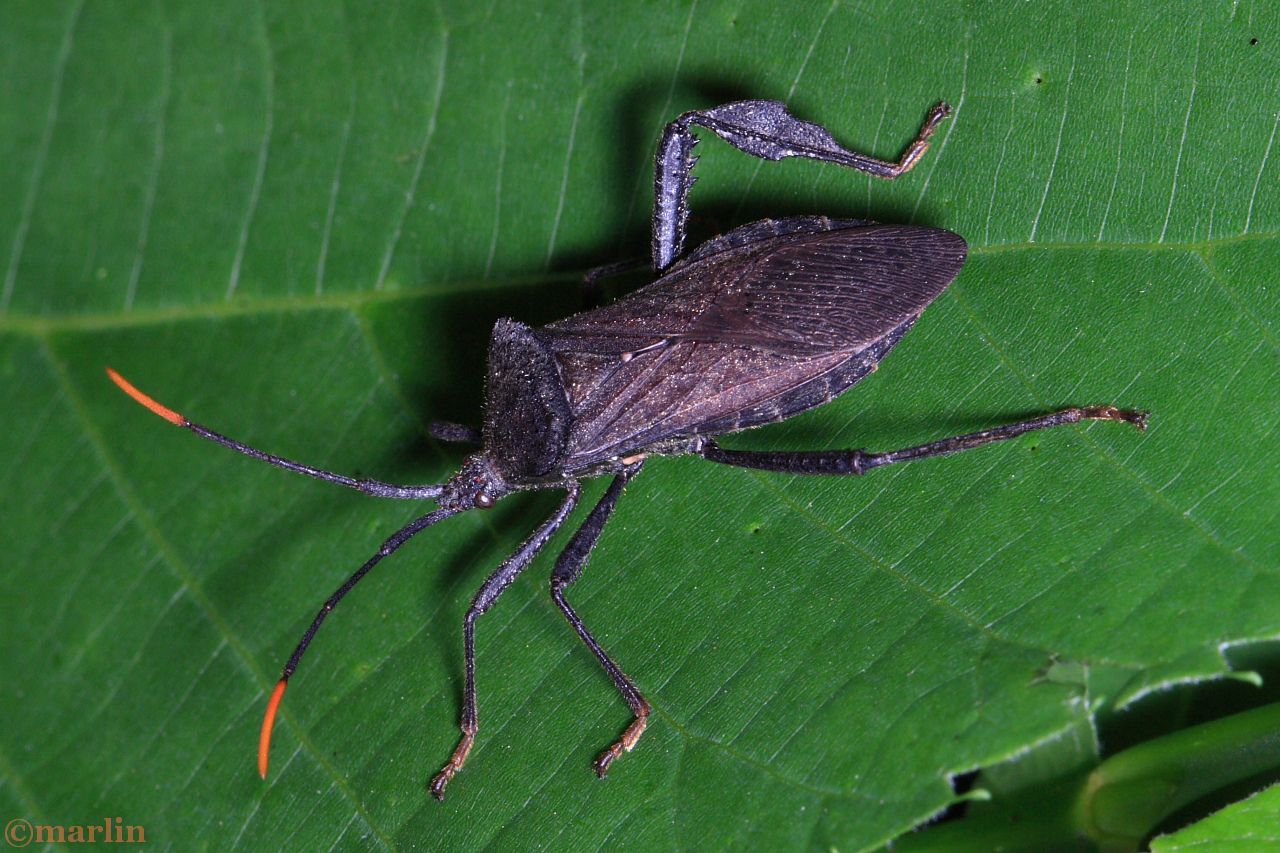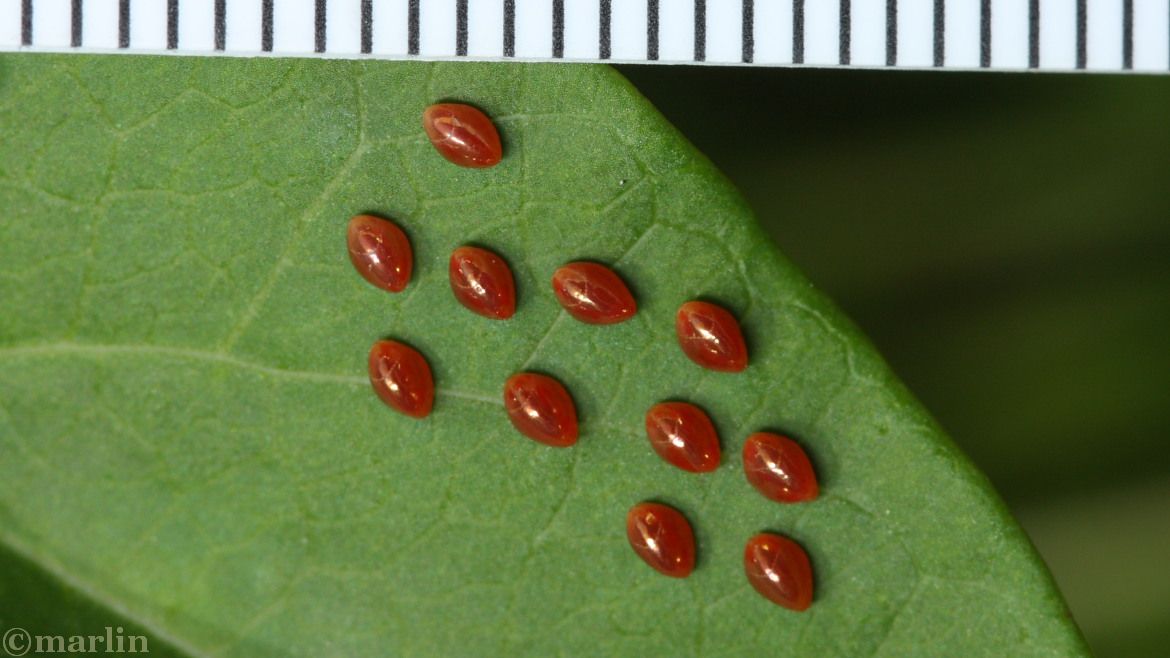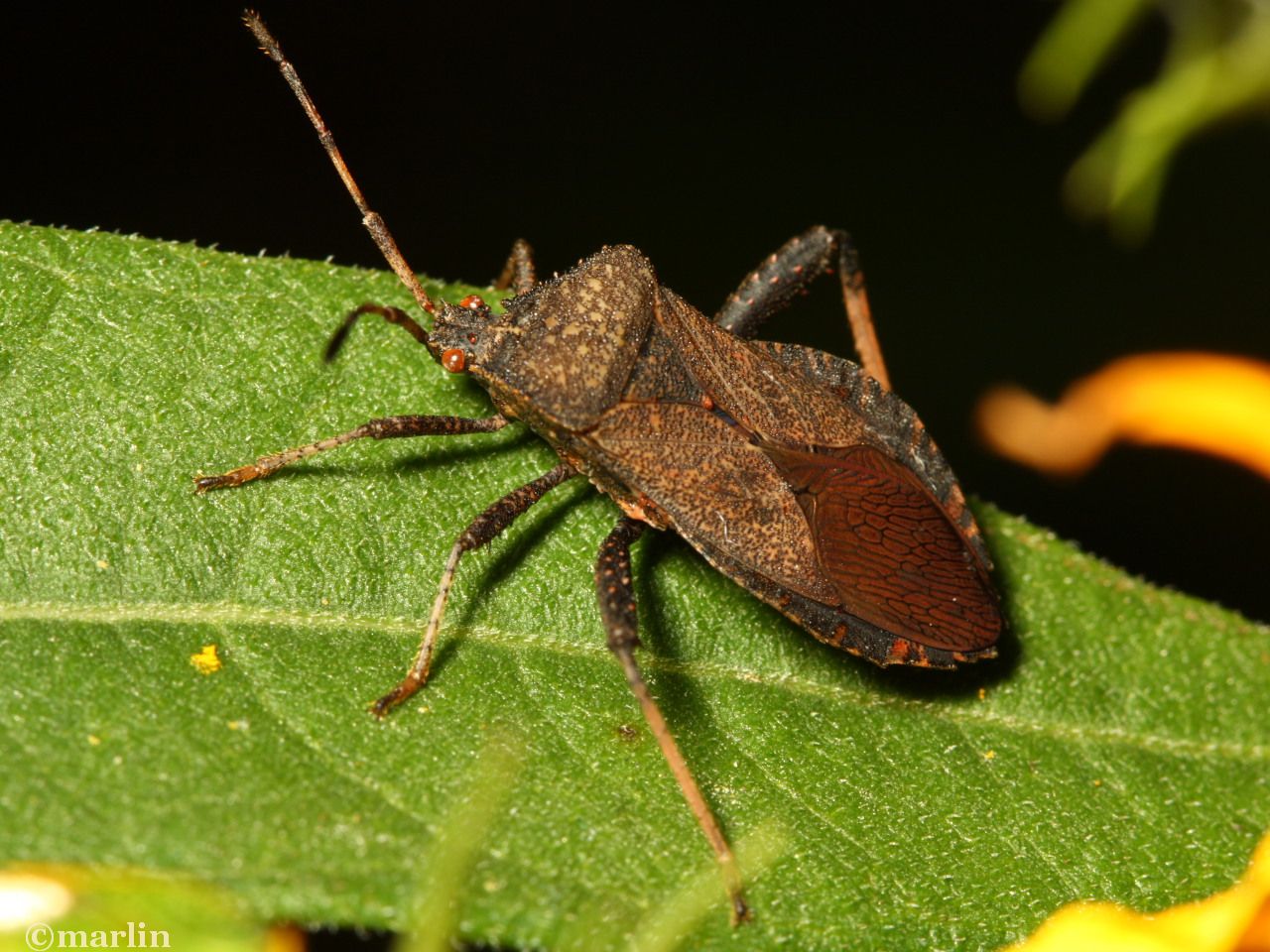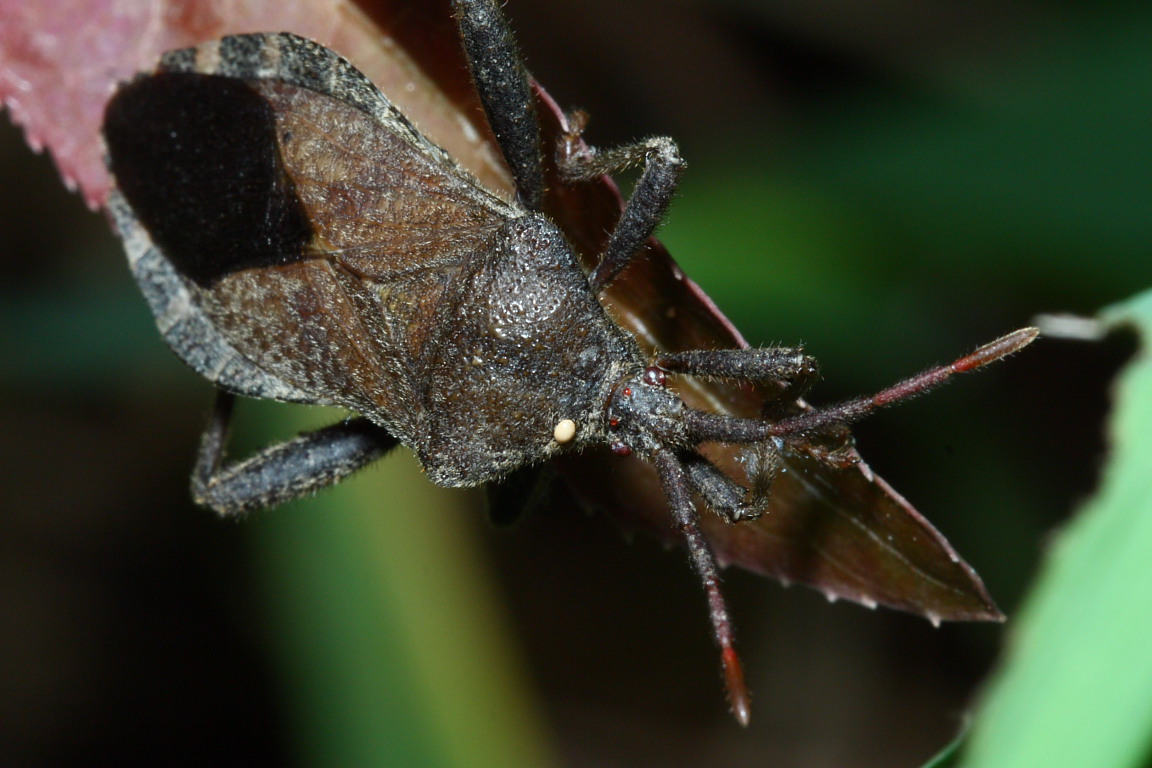Family Coreidae: Leaf-Footed Bugs
Leaf-Footed Bug – Acanthocephala terminalis
Identification: Almost uniformly dark chocolate brown or reddish brown. Tibia frequently pale yellow. First three antennal segments also brown; 4th segment contrasting pale yellow to orange, but sometimes nearly white. This is a common species found on many trees and shrubs along woodland margins and meadows. Favored host plants include hickory, goldenrod, boneset, and joe-pye weed. [3]
The Hemiptera family Coreidae includes leaf-footed bugs, clown bugs, and squash bugs. A few species are commonly called tip-wilters, since their feeding activities cause the tips of plant stems to perish. Leaf-footed bugs take their common name from leaf-shaped expansions of the hind tibia and femora. They have four-segmented antennae, large compound eyes and one pair of ocelli, or simple eyes.
All species of Coreidae are phytophagous, that is, plant-feeders. Like all true bugs, the adults are equipped with a beak, or rostrum, a hypodermic needle-like device carried under the head, which it uses to pierce the plant tissue and suck out liquids. But they do not simply “suck out sap”, they inject a tissue-dissolving saliva and vacuum out the resulting slurry. Widespread damage to the plant is a result of these liquefying enzymes. [1]
Life Cycle: Like all Hemiptera, leaf-footed bugs go through a simple metamorphosis with egg, nymph, and adult stages. Females of most species lay eggs during warm months. The eggs are often stuck to leaves or branches, or hidden under bark, depending on the species. After hatching, the wingless nymphs molt several times before becoming full-sized, winged adults. The adults will mate and reproduce numerous times during the growing season.
Like stink bugs, leaf-footed bugs are able to exude foul-smelling fluids from pores on the sides of their bodies. These secretions help to protect leaf-footed bugs from predators. Nevertheless, leaf-footed bugs are often eaten by birds, spiders, assassin bugs, and other predators. They are often targets for other insects species who glue their eggs to the bug, as below. [2]
Leaf-footed bug with parasite egg attached to its pronotum; likely culprits include the tachinid fly Trichopoda pennipes.
References
- Kenn Kaufman and Eric R. Eaton, Kaufman Field Guide to Insects of North America, 1st ed.
- Thomas Eisner, Maria Eisner, and Melody Siegler, Secret Weapons: Defenses of Insects, Spiders, Scorpions, and Other Many-Legged Creatures
- Les Line, The Audubon Society Book of Insects (Harry N Abrams, 1983).
Suborder Auchenorrhyncha – Cicadas & Planthoppers
Suborder Sternorrhyncha – Aphids, scales, mealybugs, jumping plant lice
Tree Encyclopedia / North American Insects & Spiders is dedicated to providing family-friendly educational
resources for our friends around the world through large images and macro photographs of flora and fauna.






